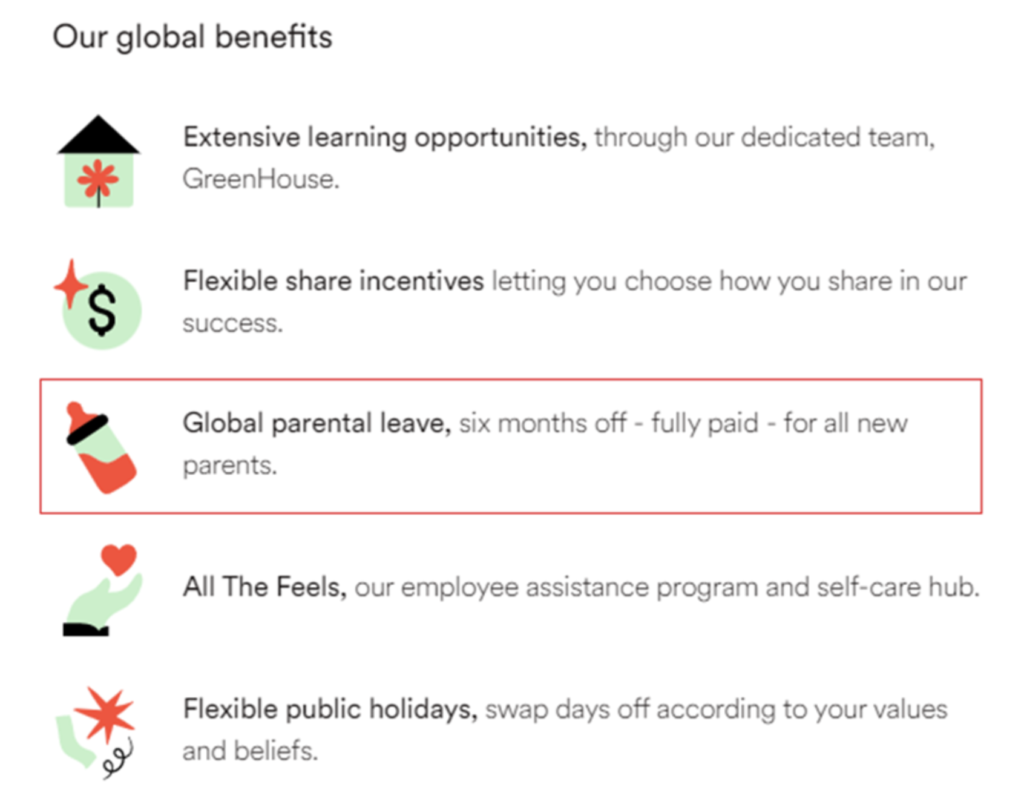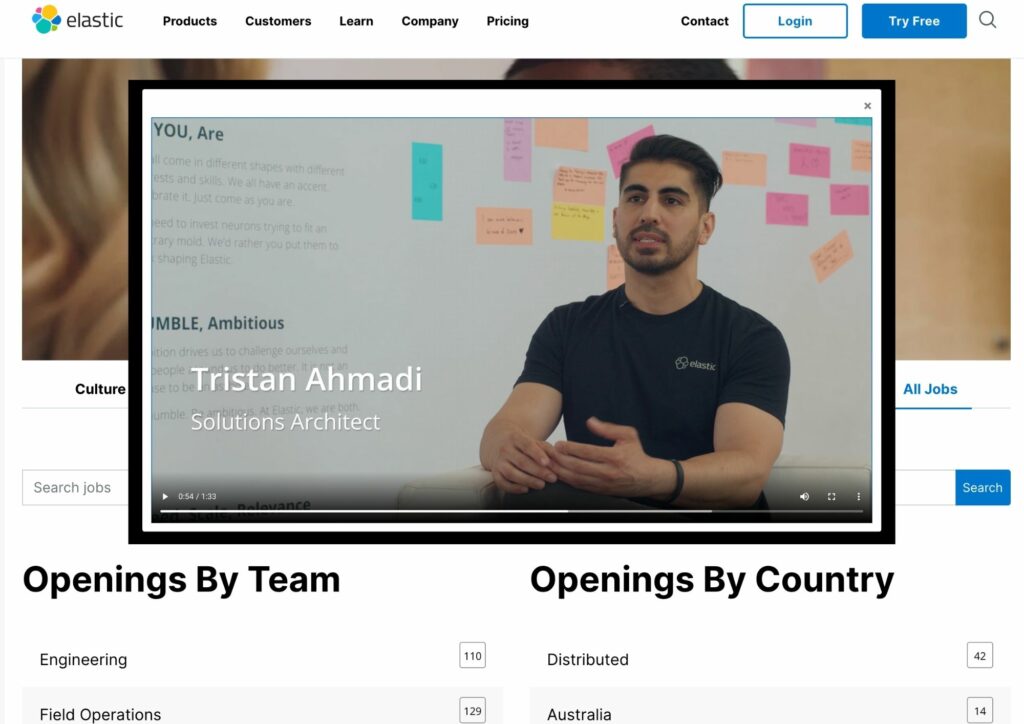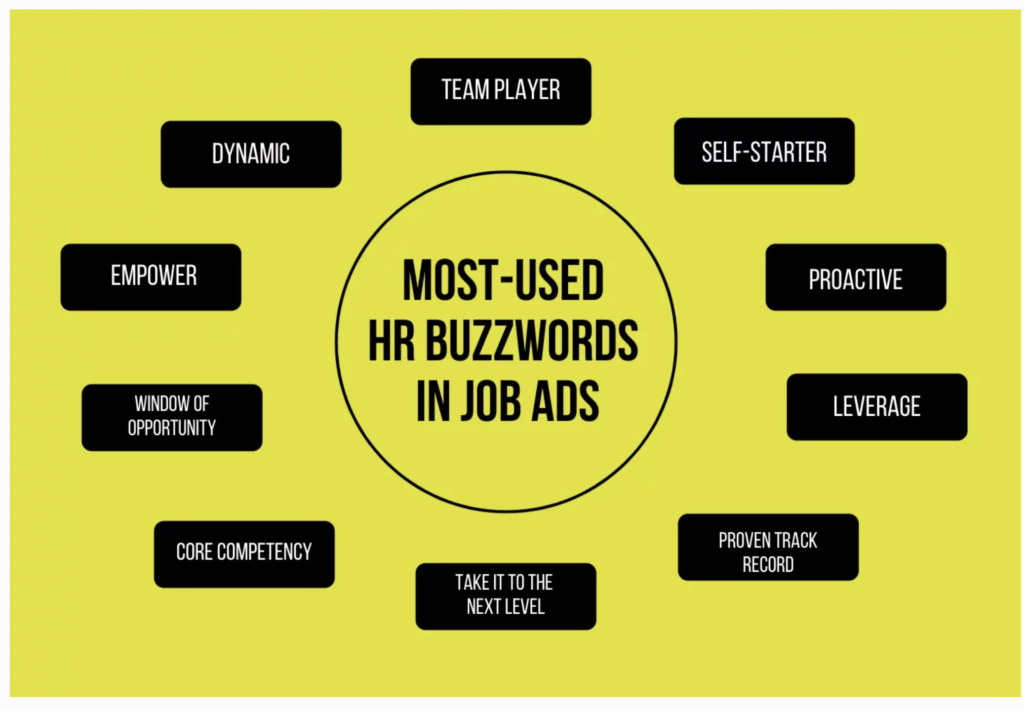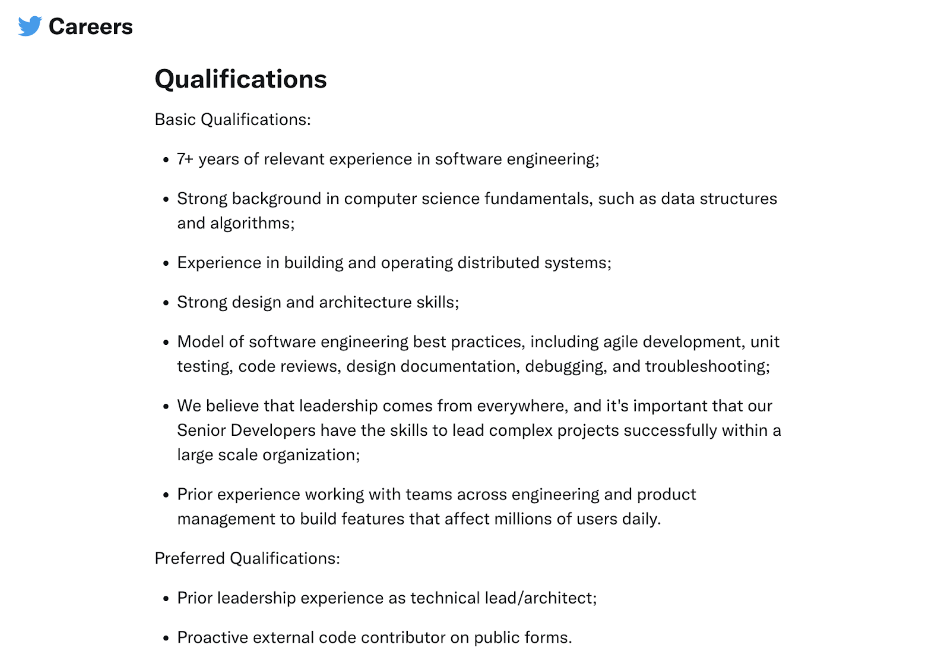- The Craziest Job Description on Reddit and What They Reveal About Hiring Today - December 16, 2025
- Beyond the Buzzword: What Recruiters Must Learn from the HiringLab AI Context Deficit Study - December 10, 2025
- Why So Many Job Descriptions Feel Fake or Misleading, According to Reddit - November 26, 2025
Do you want to make sure your job ads grab the attention of all kinds of people? Then, you’re in the right place. So, do you need to make your talent search more inclusive to attract diverse talent? Here are 11 tips for writing job descriptions to attract diverse talent:
1. Avoid exclusionary words to attract diverse talent
If the words you use in job ads are biased or make some people feel left out, you might push away diverse candidates. So, try to avoid words that offend (or exclude) job seekers based on their:
- race
- ethnicity
- gender
- age
- sexual orientation
- disability
- felony history
- education
- mental health
- veteran status
When you’re writing job descriptions to attract diverse candidates, tools like Ongig allow you to remove bias in just a few clicks. Here’s a table with 25 of the most common exclusionary words Ongig flags (and their inclusive replacements):
| Exclusionary Words | Bias Category | Inclusive Replacements |
|---|---|---|
| a cakewalk | race | an easy task |
| bend | physical disability | lower oneself |
| blacklist/blacklists | race | blocklist, denylist |
| brown bag session | race | lunch and learn, learning session |
| climb/climbing | physical disability | scale, move up, scaling, moving up |
| criminal background check | former felons | background check |
| culture fit | race | culture add |
| digital native | age | passionate about technology |
| English native speaker | race | fluent in English |
| degree from a top school | elitism | a degree |
| he/she | LGBTQ+ | they/you |
| his/her | LGBTQ+ | their, your |
| lift/lifting | physical disability | move, hold, moving, holding |
| maternity and paternity leave | LGBTQ+ | parental leave, parental time off |
| new graduate | age | a graduate |
| recent graduate | age | a graduate |
| sanity check | mental health | review, audit, double-check |
| servant leadership | race | growth leadership, supportive leadership |
| sit/sitting | physical disability | be stationary, being stationary |
| stand/standing | physical disability | be upright/stationary, being upright/stationary |
| the men and women | LGBTQ+ | the team, the people |
| tribe | race | team, network |
| typing | physical disability | inputting, entering |
| walk/walking | physical disability | move, traverse, moving, traversing |
| walkthroughs | physical disability | final checks |
2. Trim the fluff and focus on your needs
Instead of listing every obvious requirement, just focus on the important things for the job. So, keeping your job ads clear and to the point helps people understand what you really need. Also, it makes your JDs easier to read.
For instance, let’s say you want to hire candidates with “strong communication skills” or “a team player”. But, do you really need to list those as requirements?
Listing too many “required skills” can scare off candidates. Especially women, who mainly apply for roles only if they meet 100% of the requirements.
Try focusing on what you actually need in a candidate (e.g., “experience creating a marketing budget” or “experience managing a content team”). Only list your “most-valued” marketing skills.
3. List work perks that will attract diverse talent
Work perks, like parental leave or help with tuition, are important for keeping employees happy and making them want to stay. So, it’s a good idea to create benefits that attract all kinds of people to your company. And these benefits can also make them stay with you longer.
Here are some examples:
Attract diverse talent: Let’s look at Spotify
Spotify offers generous parental leave – 6 months fully paid – for all new parents:

This perk helps you attract diverse talent like working parents (women, men, or gender non-binary) who want to spend time with their new children. Also, paid parental leave might even help you keep current employees after having children too.
Attract diverse talent: Let’s look at General Motors (GM)
GM offers tuition assistance and student loan refinancing. A big perk for diverse talent.
In the 2020 Census, 88% of African Americans had a High School Diploma, and only 26% had a Bachelor’s Degree.
In addition, helping people with education is a great way to attract those who might not have had many chances. So, if they already went to college, offering help with their student loans is a really nice thing to do.
Attract diverse talent: Let’s look at Tinder
Tinder lists employee resource groups as a benefit to joining their team:

4. End your JDs with a diversity statement to attract diverse talent
Include an EEO or diversity statement if you’re writing job descriptions to attract diverse talent. Research shows:
“even a generic statement is still better than no statement”
source: LinkedIn Study of 764 members on Diversity Statements, June 2021.
Check out this link for 25+ examples of D&I statements. Here’s what Pinterest uses for its diversity statement:
“At Pinterest, our mission is to bring everyone the inspiration to create a life they love, including our employees. We’re taking on the most exciting challenges of our working lives, and we succeed with a team that represents an inclusive and diverse set of identities and backgrounds.”
Your company’s equal opportunity employer (EEO) tagline also reflects your commitment to equality and diversity. EEO statements are not required unless you are a federal contractor, but many companies still use them.
So, here’s the EEO statement Microsoft puts at the end of their job descriptions:
“Microsoft is an equal opportunity employer. All qualified applicants will receive consideration for employment without regard to age, ancestry, color, family or medical care leave, gender identity or expression, genetic information, marital status, medical condition, national origin, physical or mental disability, political affiliation, protected veteran status, race, religion, sex (including pregnancy), sexual orientation, or any other characteristic protected by applicable laws, regulations, and ordinances.”
5. Include testimonials from diverse employees
If your team is diverse, let everyone know in your job ads. So, start sharing stories from your diverse employees to help job seekers understand your job and what it’s like to work at your company.
You can also add video or photo testimonials to your job description pages, or a special section on your career site.
Elastic has a video like this on their job listings page:

Note: Some applicant tracking systems don’t have a place for videos or images in your job descriptions. So, try adding a link to your testimonials on YouTube or your career site.
6. Limit jargon
“Jargon” is when a group or job uses words that are hard for people outside that group to understand. So, using jargon can make writing, especially job ads, more complicated than it needs to be.
While it’s okay to have some special words in certain jobs, you need to know where to stop. So, it’s a problem if your job ad has so many that people looking for a job can’t figure out what it’s asking for.
Here are 10 of the most commonly used jargon you’ll find in job ads are:

When you write job ads to get different kinds of people interested, just keep it simple. So, use simple and clear words instead of complicated ones. This can help you bring in a more diverse group of candidates.
Take the example of this Twitter job ad for a Software Engineer. There is very little jargon, and also the qualifications are written in simple language:

7. Include salary (or salary range)
61% of applicants want to see salary included in the job description. Sharing compensation in a job ad is not a requirement by law everywhere, but it’s required in some states like California, New York, Colorado, and Washington.
Listing the salary (or at least the salary range) in your job descriptions to attract diverse candidates not only helps attract diverse talent, but can also save you the frustration of finding the best candidate only to find out they are not happy with the salary you are offering.
Here’s how Comcast displays the salary range for a Director for Design Operations:

8. Focus on Core Skills, Not Credentials
Emphasize the core skills necessary for the role rather than relying on specific credentials or degrees.
When you overemphasize formal qualifications, such as a college degree or a specific number of years in a certain industry, you can unintentionally limit your talent pool and discourage candidates from diverse backgrounds, who may have acquired valuable skills through non-traditional paths, from applying.
For example, instead of asking for “5+ years of experience in marketing with a degree in communications,” you can ask for “proven experience in developing and executing successful marketing campaigns.” This change in wording opens the door for candidates who may have the skills but not the formal credentials to demonstrate their qualifications.
It’s also helpful to include a note in your job ads encouraging candidates to apply even if they don’t meet every single qualification. A simple statement such as, “If you don’t meet all the qualifications, but think you’d be a great fit for this role, we encourage you to apply,” can make a difference in encouraging more applicants from underrepresented groups.
9. Use Multiple Channels to Reach Diverse Talent
You need to expand beyond traditional recruiting platforms and use multiple channels that reach underrepresented groups.
Start by posting job ads on niche job boards that cater specifically to diverse communities. For instance, platforms like Diversity Jobs and Black Career Network are dedicated to helping companies connect with diverse candidates.
Therefore, by using these platforms, you can reach professionals from minority groups, women, veterans, and people with disabilities.
Social media can also be a powerful tool for reaching diverse talent.
LinkedIn, Facebook, and Twitter allow you to promote your job openings to a wide audience. There are also groups and communities for women in tech, LGBTQ+ professionals, or veterans that can help spread the word about your open roles in communities that may not be reached by traditional job boards.
There’s one channel that isn’t as popular but can also be effective: Professional Associations that support underrepresented groups.
Many of these organizations have job boards, networking events, or newsletters where you can post job opportunities. For example, organizations like the National Society of Black Engineers or Society of Hispanic Professional Engineers have established networks of diverse talent in specific fields.
10. Highlight Inclusive Leadership in Your Company
Jennifer Brown, a diversity and inclusion consultant, writes in an article for Berret-Koehler Publishers:
“Only leadership can make finding and hiring diverse talent—a key step to creating inclusive workplaces—a priority.”
This is true. Another truth is candidates from underrepresented backgrounds are more likely to apply for a role if they see that the leadership team is committed to fostering diversity, equity, and inclusion.
In your job ads, emphasize how your leaders prioritize creating an inclusive environment where everyone’s voice is heard and valued.
You can also showcase this commitment by sharing leadership initiatives that promote diversity and inclusion within the company.
For example, mention any diversity councils, mentorship programs, or training programs led by your leadership team that focus on DEIB (Diversity, Equity, Inclusion, and Belonging).
Highlight how these initiatives have positively impacted your workforce, such as by increasing representation or fostering innovation through diverse perspectives.
Another way to demonstrate inclusive leadership (that I don’t see a lot of in job ads) is to highlight leaders from diverse backgrounds who hold key positions within the organization.
This shows potential candidates that your company values diversity at every level, including in decision-making roles. Representation in leadership is a powerful signal that your organization is serious about creating pathways for diverse employees to grow and succeed.
11. Use Inclusive Visuals in Job Ads
Visuals can be very powerful when it comes to helping potential candidates envision themselves within your company.
When your job ads feature diverse imagery, it sends a strong message that your organization values different backgrounds, perspectives, and identities. This can increase the appeal of your company to candidates from underrepresented groups and create a sense of belonging even before they apply.
This POV is backed by a study commissioned by Shutterstock. About 90 percent of Generation X and Millennial marketers believed that diverse representation in marketing materials, including websites, can improve a brand’s reputation.
So, to implement this, choose images that reflect a wide range of ethnicities, genders, ages, and abilities.
Show employees in various roles, from entry-level positions to leadership, to demonstrate that your company fosters diversity at every level. Avoid using stock images, and instead aim for authenticity.
Also highlight moments where team members collaborate, celebrate, or innovate together to show the positive, supportive work environment candidates can expect.
So, using inclusive visuals in your job ads is a simple yet effective way to signal that diversity and inclusion are core values at your company, making candidates from all walks of life feel welcome to apply.
Why I wrote this?
Writing job descriptions to attract diverse candidates doesn’t have to be hard. Ongig’s mission is to ensure your JDs are effective and bias-free. Please request a demo to learn more.
Shout-outs:
- Why You Need to Stop Using Jargon in Your Job Ads Right Now ( By Agency Central)
- These are the most common ( and annoying) jargon in job ads (By Stephanie Vozza)
